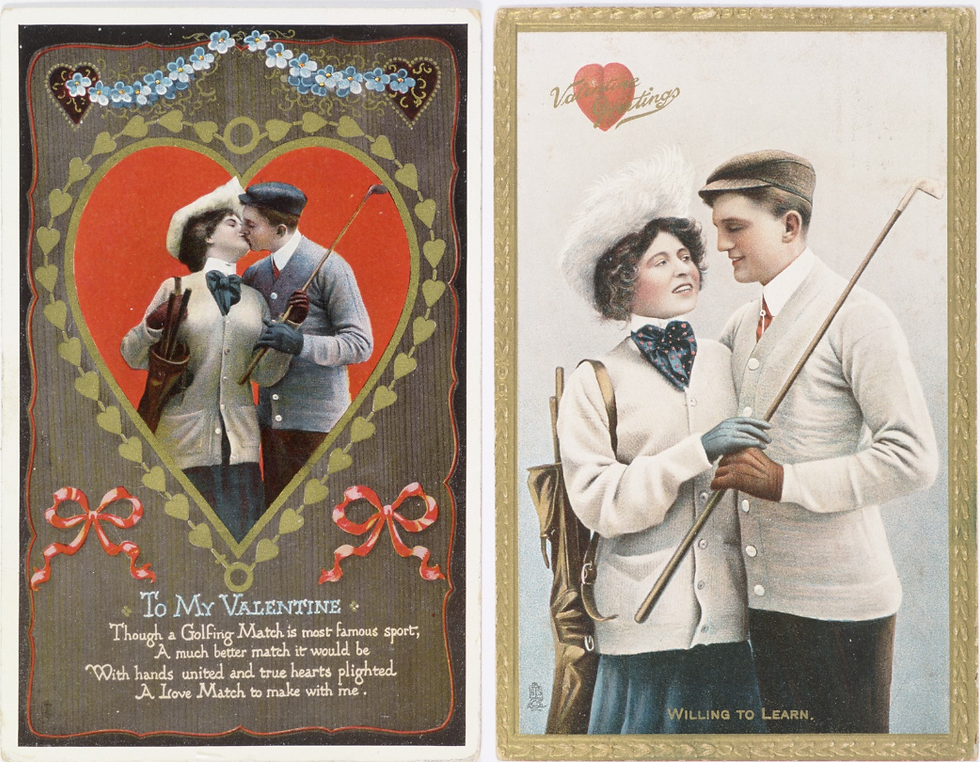A Short History of Valentine’s Day Cards
- UR Department of History

- Feb 14, 2019
- 3 min read

Valentine’s day first started as a three day long event — from the 13th to the 15th of February, ancient Romans celebrated the feast of Lupercalia. This was an ancient fertility festival, to avert evil spirits and purify the city, releasing health to all. In order to mark the occasion, Roman men believed that if they sacrificed goats and used their skins to whip women, it would make them more fertile. Towards the end of the 5th century, Pope Gelasius is to have declared 14 of February to be Valentine’s Day, in an attempt to reclaim and Christianise the holiday.
Although it’s somewhat simple to trace back the origins of the Valentine’s Day celebrations, it is not nearly as clear which St. Valentine the day is dedicated to. Two saints with the same name share the feast day, and both of these saints were martyred in Rome; Valentine of Terni in around AD 197 and Valentine of Rome in around AD 496.
In 15th-century France, however, the 14th of February became an annual feast day celebrating romantic love. Lavish banquets with singing and dancing were held to mark the occasion. It was also a 15th-century Frenchman who committed the earliest surviving Valentine’s greeting to paper. While imprisoned in the Tower of London following the 1415 battle of Agincourt, the Duke of Orleans wrote to his wife:
Je suis desja d’amour tanné
Ma tres doulce Valentinée
This can be loosely translated as, “I am already sick of love, my very gentle Valentine”. The British Library, where this letter currently survives, also holds the older surviving Valentine’s letter in the English language. It dates from 1477 and was sent by one Margery Brews to her fiancé John Paston. In this letter Margery describes John as her “right well-beloved Valentine”.

Fast forward to the 17th century, and Valentine’s Day gets a mention in Shakespeare’s Hamlet, when Ophelia is given the lines:
To-morrow is Saint Valentine’s day,
All in the morning betime,
And I a maid at your window,
To be your Valentine.
However, it was in the 18th century that the most familiar Valentine’s poem (and Valentine's meme) made its first appearance. These lines, found in a collection of nursery rhymes printed in 1784, read:
The rose is red, the violet’s blue,
The honey’s sweet, and so are you.
While this was the first appearance of the poem in this form, its origins reach back to Sir Edmund Spenser’s 1590s epic, The Faerie Queene. This featured the lines:
She bath’d with roses red, and violets blew,
And all the sweetest flowres, that in the forrest grew.

The first valentine’s day cards, as we know them today, were sent in the 18th century. Initially, these were handmade efforts, and some were beautifully complex. Wives, husbands, lovers would all decorate paper with romantic symbols, including flowers, love notes, lines of poetry, and even little puzzles. There were even books people could purchase that offered guidance on selecting the perfect words and best images to woo their lover.
Lovers would decorate paper with romantic symbols including flowers and love knots, often including puzzles and lines of poetry. Those who were less inspired could buy volumes that offered guidance on selecting the appropriate words and images to woo their lover. These cards were then slipped secretly under a door, or tied to a door-knocker. This is where the idea of “secret admirers” comes into play.
However, it was in Georgian Britain that pre-printed cards first began to appear, though these were not yet as popular as they were eventually to become. Perhaps the oldest surviving example dates from 1797: this card, held at York Castle Museum, was sent by one Catherine Mossday to a Mr Brown of London. It is decorated with flowers and images of Cupid, with a verse printed around the border reading:
Since on this ever Happy day,
All Nature’s full of Love and Play
Yet harmless still if my design,‘
Tis but to be your Valentine.
Jumping forward into today, Valentine’s Day at large is a multi-billion dollar industry. It costs the average American $136.57, according to the National Retail Federation. And consumers on a whole spend a total of:
$2 billion on flowers.
$1.7 billion on candy.
$4.3 billion on jewelry.
$1 billion on greeting cards.
Happy Valentine’s Day!






Comments